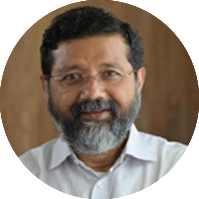Global Platform for Disaster Risk Reduction 2025
Side Event: GLOF Hazard Modelling and Risk Management in the Indian Himalayas and the Tian Shan Region
Organized by Swiss Agency for Development and Cooperation (SDC), National Disaster Management Authority (NDMA), India and UNESCO Almaty Regional Office for Central Asia
📍 Geneva Room, Varembé Conference Centre (CCV), Geneva, Switzerland
Introduction
Climate change is exacerbating disasters across the Himalayas, with each passing year seeing an increase in such events. It is accelerating glacier retreat, particularly in high-altitude regions like the Himalayas. As glaciers melt, glacial lakes are forming, and the rising volume of water in these lakes is increasing the risk of Glacial Lake Outburst Floods (GLOFs). These floods pose a growing threat to communities and ecosystems downstream, potentially causing catastrophic damage. Thus, GLOF risk management is crucial to mitigate these growing risks and can be strategically planned and executed.
Integrated GLOF Risk Management is a multi-level approach that enhances risk management at local, regional, and international levels. Built on three core pillars—Science (assessments, flow modeling, and prediction technologies), Governance (policies, regulations, and institutional frameworks), and International Cooperation (knowledge exchange, capacity building, and joint monitoring)—this approach integrates scientific assessments, policy development, and global collaboration to strengthen resilience against GLOF hazards. Initiatives like the Indo-Swiss collaboration under the SCA-Himalayas project in India, establishing an integrated GLOF risk management model, and the GLOFCA project in Central Asia, enhancing climate adaptation and risk reduction, demonstrate how sustained technical partnerships can boost resilience in vulnerable mountain regions.
Session Overview
A side event on GLOF Hazard Modelling and Risk Management in the Indian Himalayas and the Tian Shan Region is being organized by SDC, India and UNESCO Almaty Regional Office for Central Asia during the Global Platform for Disaster Risk Reduction 2025. This session on GLOF Risk Management will bring together scientists, policymakers, disaster risk reduction (DRR) experts and Development Cooperation representatives to explore the growing threat of GLOFs in high mountain regions, especially in the Indian Himalayas and the Tian Shan. This side event will highlight science-driven, governance-oriented, and internationally cooperative approaches to GLOF risk management.The session will showcase a unique collaborative model involving Indian, Swiss, and international experts, illustrating how early warning systems, hazard mapping, and community-based preparedness are being implemented in some of the world’s most challenging terrains.
Speaker Profile
Why Attend
Participants will benefit from the engaging discussions and knowledge sharing on how countries manage GLOF risks through science, governance, and international partnerships, offering models for other glaciated regions. By joining, you’ll contribute to vital discussions on building resilience and protecting mountain ecosystems and downstream communities.







